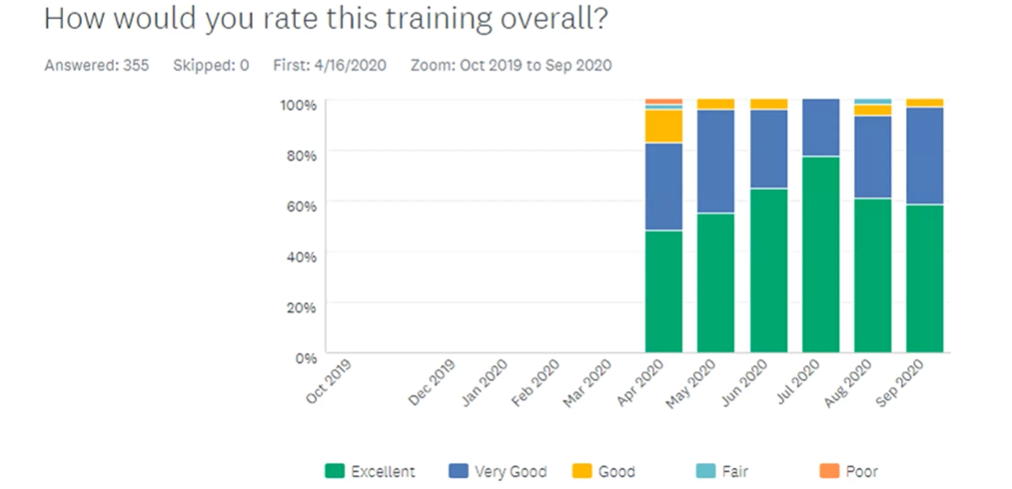Today I will be comparing and contrasting the experience of training in a virtual environment as opposed to face-to-face classroom-based learning but first, let me take you back to the early 20th century…
In 1926 world-renowned inventor, electrical engineer and futurist Nikola Tesla was asked to predict the technologies of the future.
The responses from his peers included various theories that are yet to have been realised, such as robot servants, flying cars and colonies on the moon.
Yet Tesla described, somewhat eerily, a piece of technology that was soon to become the centre-piece of our modern lives. He said in an interview:
“We shall be able to communicate with one another instantly, irrespective of distance. Not only this, but through television and telephony we shall see and hear one another as perfectly as though we were face to face, despite intervening distances of thousands of miles.”
Isn’t that fascinating? A whole 94 years ago Tesla was able to conceptualise and describe the medium which was to revolutionise the way we learn, the way we do business and even life as we know it.
All things considered however, I doubt anyone could have predicted that in the year 2020 this technology would become an imperative tool in the field of education, self-development and training.
At CMC Partnership Global we have been providing change management training for over 19 years. For the majority of that time we have focused on providing dynamic and interactive face-to-face classroom-based tutelage.
Then, of course, like the rest of the world, we were enforced to undertake a huge change ourselves as we were required to switch instead to VILT (Virtual Instructor-Led Training) due to the COVID-19 pandemic and subsequent lockdown.
It is not to be understated that this was a massive challenge. Naturally, there was a worry that such a fundamental change to the structure of the deliverance of our training could impact the end product that our trainees receive – training that has given us a name and a reputation of which we are proud.
To our delight, we have found that VILT has been a resounding success and one that will surely continue long after this pandemic becomes a distant memory.
That said, as soon as it became safe to do so, we began to reintroduce classroom-based learning using safe, social-distancing measures and will continue to do so with the utmost care and due diligence for our clientele.
So now that both options are available, we can finally ask the burning questions: Virtual versus Face-to-Face learning… what’s the difference? What are the pros and cons of both options?
Face-to-Face
The Advantages
- The opportunity to meet like-minded professionals and network.
It is inevitable that being in person, in the same location and being able to read one another’s body language and other non-verbal expressions, that this will produce an encouraging setting of connection and collaboration between fellow learners. - The times in between learning, such as during breaks and lunch.
Here being in a relaxed social environment and in person, conversation may be able to flow more fluidly and it is possible that it is here some of the most profound break-throughs emerge, though often unwittingly.
The Disadvantages
- Conversation can go off-topic, possibly leading to a rushed schedule
- It’s possible the extrovert learners may dominate the classroom discussion.
- People are busier than they’ve ever been.
It may be more difficult for an individual to convince their bosses, and also their families, that training is justified when they may be required to commute long distances and be away from their desk from an extended period, not to mention the environmental impact caused by said commute.
VILT
The Pros
- Learning that is efficient, has good time-keeping and stays on topic.
- Virtual training can be completed in a space that one finds familiar and comfortable such as the office or from home.
- Some introverts may be able to engage more successfully.
Through the use of online tools such as quizzes and polls that permit anonymity and allow them to communicate their thoughts without fear of judgment from their peers. - Employees of international organisations can receive training simultaneously despite the thousands of miles of distance between one another.
I myself recently attended an internal training course alongside colleagues in Singapore, South Africa and Italy, which is a fantastic tool in ensuring organisational cohesion despite the different geographical locations and time zones. - New technologies.
The pandemic resulted in a sudden uptake in VILT and this is an area that will only continue to grow with revolutionary technologies sure to emerge and create an even more engaging learning experience.
The Cons
- People are bound by a reliance on a steady internet connection.
- There is a tendency for some to turn off their cameras during a VILT course which obviously reduces the non-verbal interactions of the class.
Instructors often have no choice but to trust that in between discussions and group work that the individual is fully engaged and not distracted by the sounds of incoming email notifications.
That said, we are proud that we have managed to avoid the scenario mentioned above in our virtual environments with considerable success. As Liam Hughes, of SP Energy Networks, stated after attending one of our virtual courses:
“The training was extremely engaging and thought provoking which resulted in high participation and discussion.”
Moreover, we have been thrilled by the very positive feedback regarding virtual training including some of our best scores to date. As you can see in the graphic below for the month of July, which due to restrictions at the time were entirely VILT, we received a 100% positive feedback score for the month for which we are delighted.

So which one should you choose?
Which one is best for you and your organisation? Well, the only person who can answer that is you!
As the fog of COVID slowly recedes it is clear that VILT will remain a popular training option compared with the classroom alternative for many people. But there will doubtlessly be others who would still rather have traditional face-to-face training.
Here at CMC Partnership Global we are strongly committed to providing training that suits your needs, be that face-to-face or virtually, we are here to help you change for good, together.


